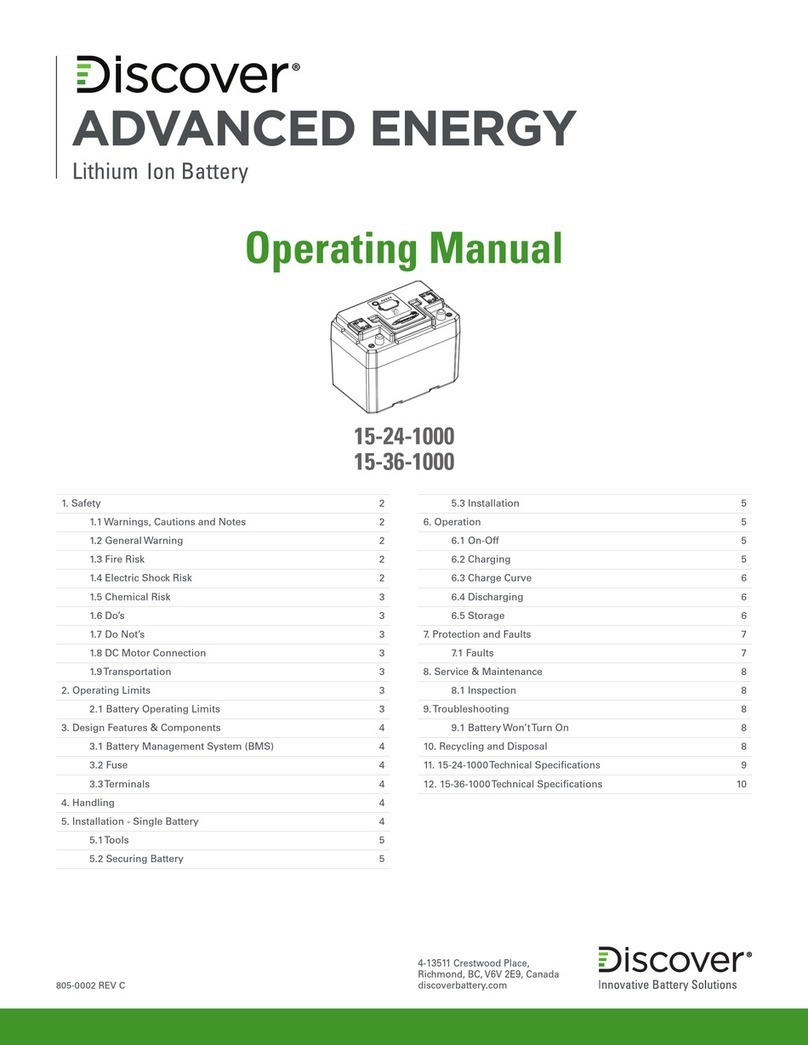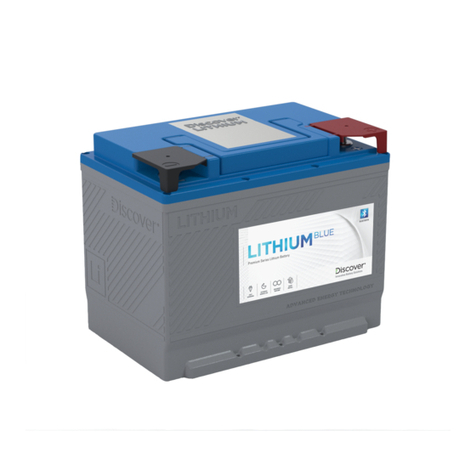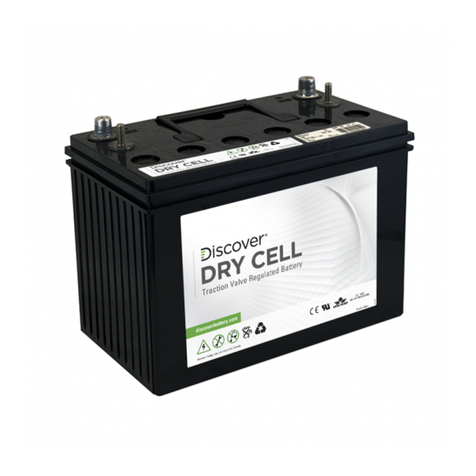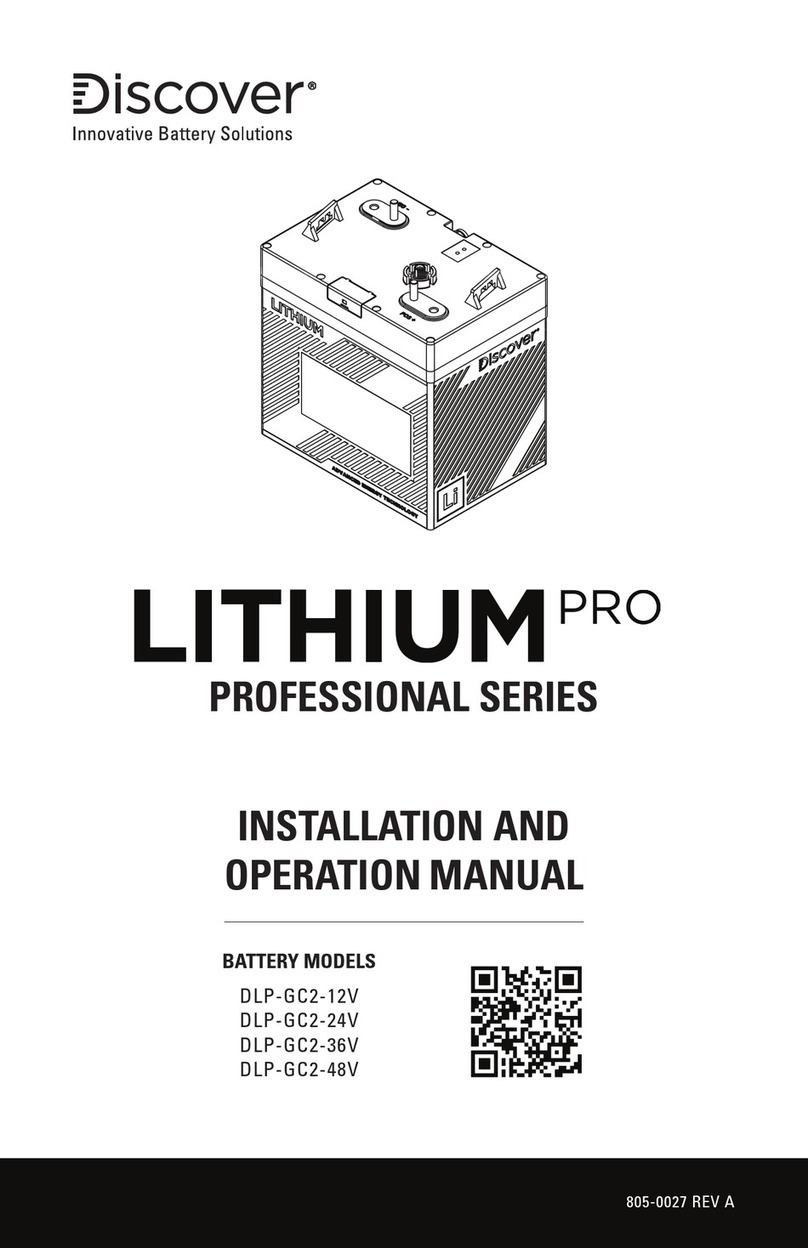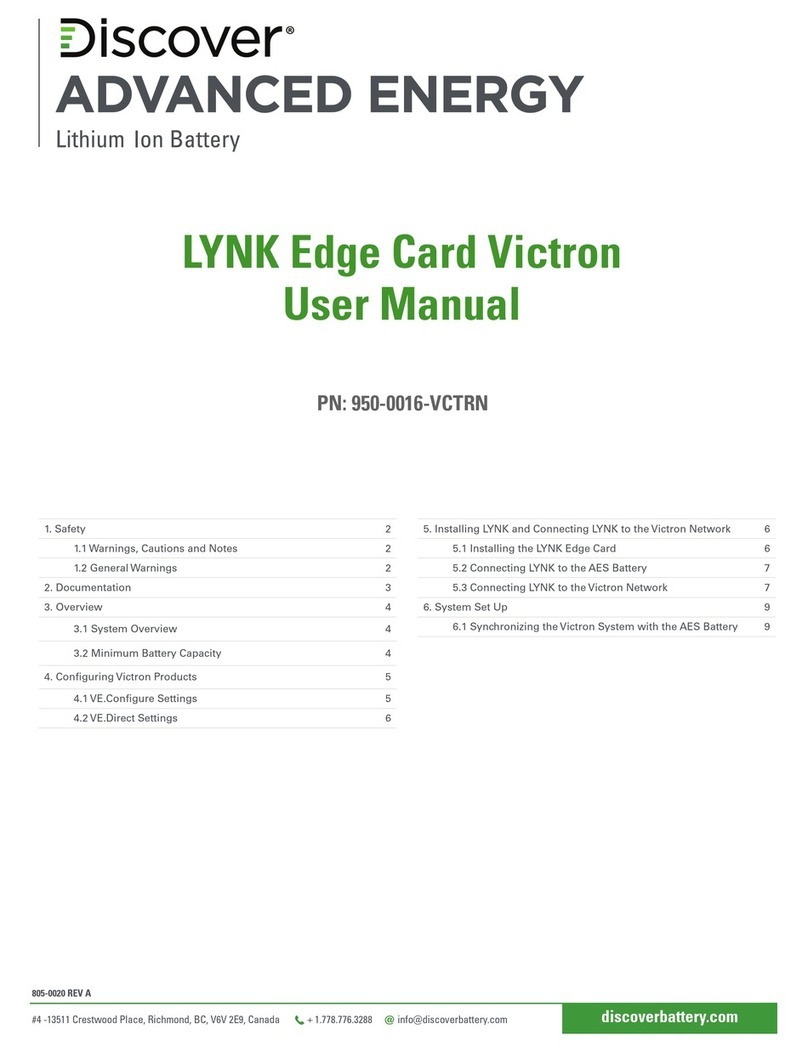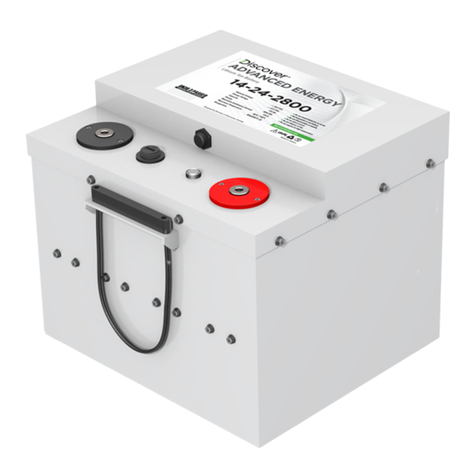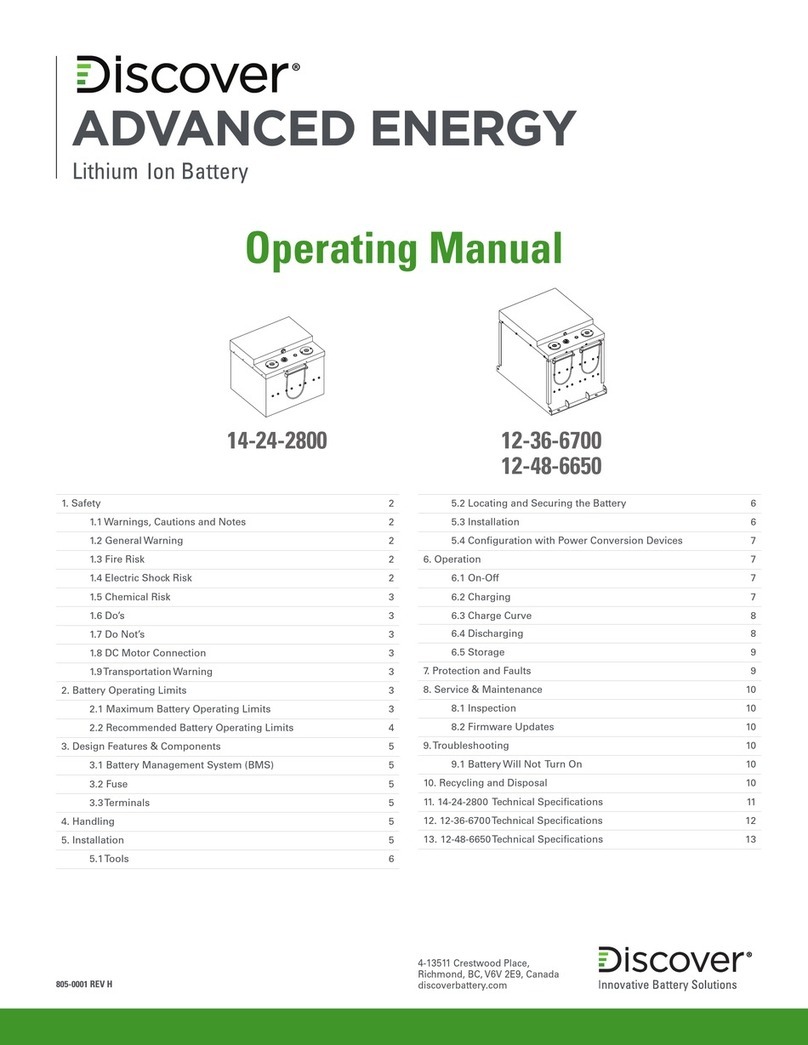
4discoverbattery.com
• Maintain the same storage conditions for all batteries within the same batch. Depending upon storage conditions and
temperature, storage time may be limited.
• If lead acid batteries are to be stored for extended periods of time, they must be placed fully charged.
• To prevent over discharge during storage, do not store batteries for more than 6 months at 20°C/68°F or 3 months at
30°C/86°F before performing a re-fresh charge. Failure to observe these conditions may result in significantly reduced
capacity and service life.
• Record dates and conditions for all charges during storage.
2.3 Unpacking and Handling
• Never lift battery by the terminal posts. Lifting batteries heavier than 25 kg/55 lb should be made with lifting belts
• Never drag or roll the battery!
• The batteries are fully charged before shipment. Do not short circuit.
• Check for evidence of leakage. All batteries with visible defects should be rejected.
3. Installation and Commissioning Charge
3.1 Installation and Battery Room Design
• All electrical protective measures, devices, accommodation and ventilation of the battery installation area must be in
accordance with all local rules and governmental regulations.
• The battery should be installed in a clean and dry area and protected against dropped items and dirt.
• Avoid placing the battery in a hot place or in direct sunlight.
• The location or arrangement of batteries should result in no greater temperature difference than 3°C/5°F between
batteries within a connected string at any given time.
• Avoid conditions that result in spot heating or cooling, as temperature variations will cause electrical imbalances
in the battery. For better cooling and temperature management ensure the installation allows for adequate air flow
around each battery. Keep 10mm/0.5in distance between batteries.
• The layout of the battery room or installation area must allow for easy access to the batteries.The recommended
minimum distance between battery rows is 1.5 times the depth of the row.
• Racks or cabinets shall be located 100mm/4in from the wall.
• Be sure to provide adequate space and lighting for inspection, maintenance, testing, and battery replacement. Space
should also be provided to allow the operation of lifting equipment and for taking measurements (battery voltage and
temperature) during service.
3.2 Batteries in Parallel Strings
Discover®Tubular Gel batteries may be connected in parallel to increase capacity, current capability and/or discharge durations.
In the case of each parallel connected string, only use batteries of the same voltage, capacity, design and age.
The resistance and ampacity of the cables or connector bars in each string must be the same, e.g. same cross-section, same
length and same conductor type (copper, aluminum). In addition, each string should be equipped with disconnect capabilities
(circuit breakers) for maintenance and safety purposes.
Discover®recommends a maximum of 4 strings parallel. If the following steps are fulfilled it is possible to have more strings in
parallel without reducing battery life or batteries getting out of balance if the following requirements are fulfilled:
• The same voltage drop must be realized from each string to the end connection (load and ground).This can be
achieved by proper choice of cable lengths, cable diameters and arrangement for crosswise connection configurations
• The connector cables for positive and negative terminals of each battery string must have the same length
• It is a must that each string has a manually operated switching device that also automatically opens or breaks the
circuit in the event of an over current (circuit breaker).
• Each string must have the same number of batteries
• Each string must be exposed to the same heat or temperature potential.
• Always connect the individual series strings first and then check that the different strings are at the same potential
before connecting them together on the bus.
3.3 Batteries in Series Strings
Discover®Tubular Gel batteries may be connected in series to increase system voltage. In the case of each series connected string,
only use batteries of the same voltage, capacity, design and age.
